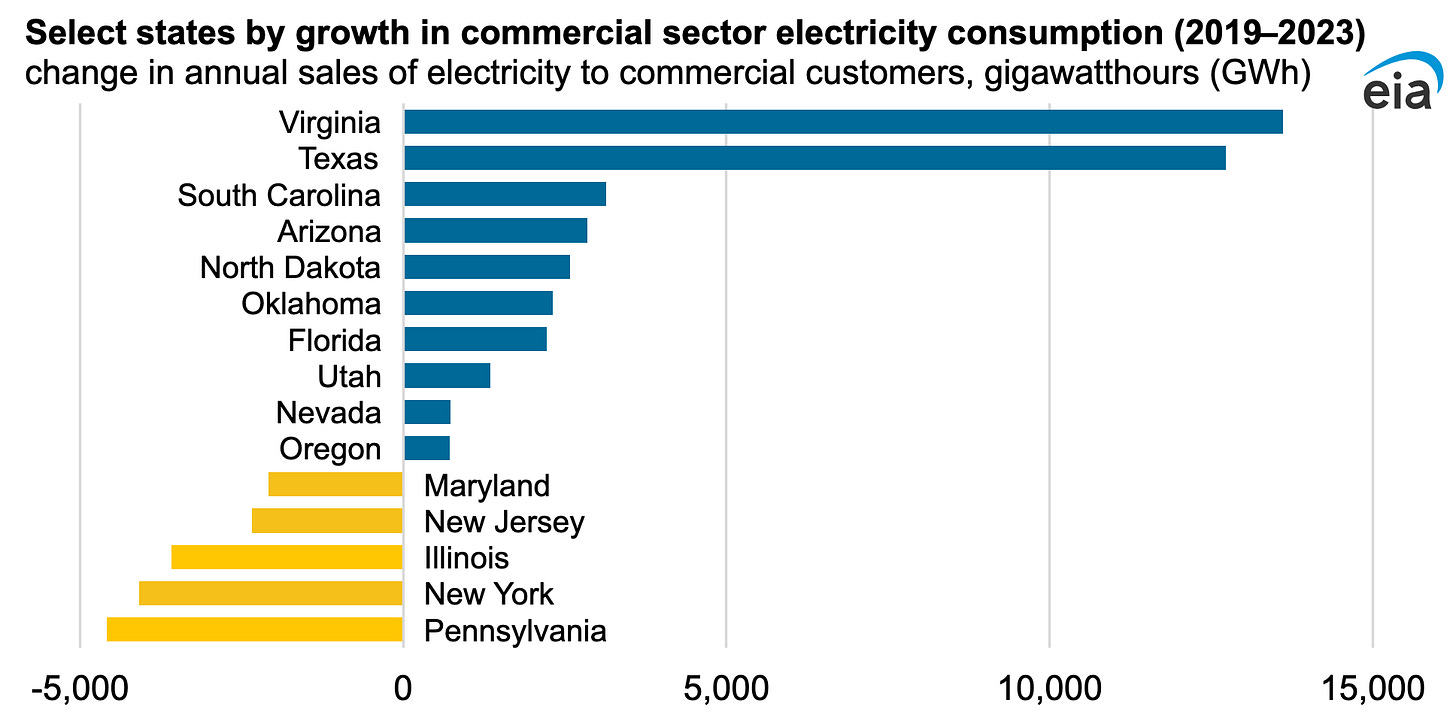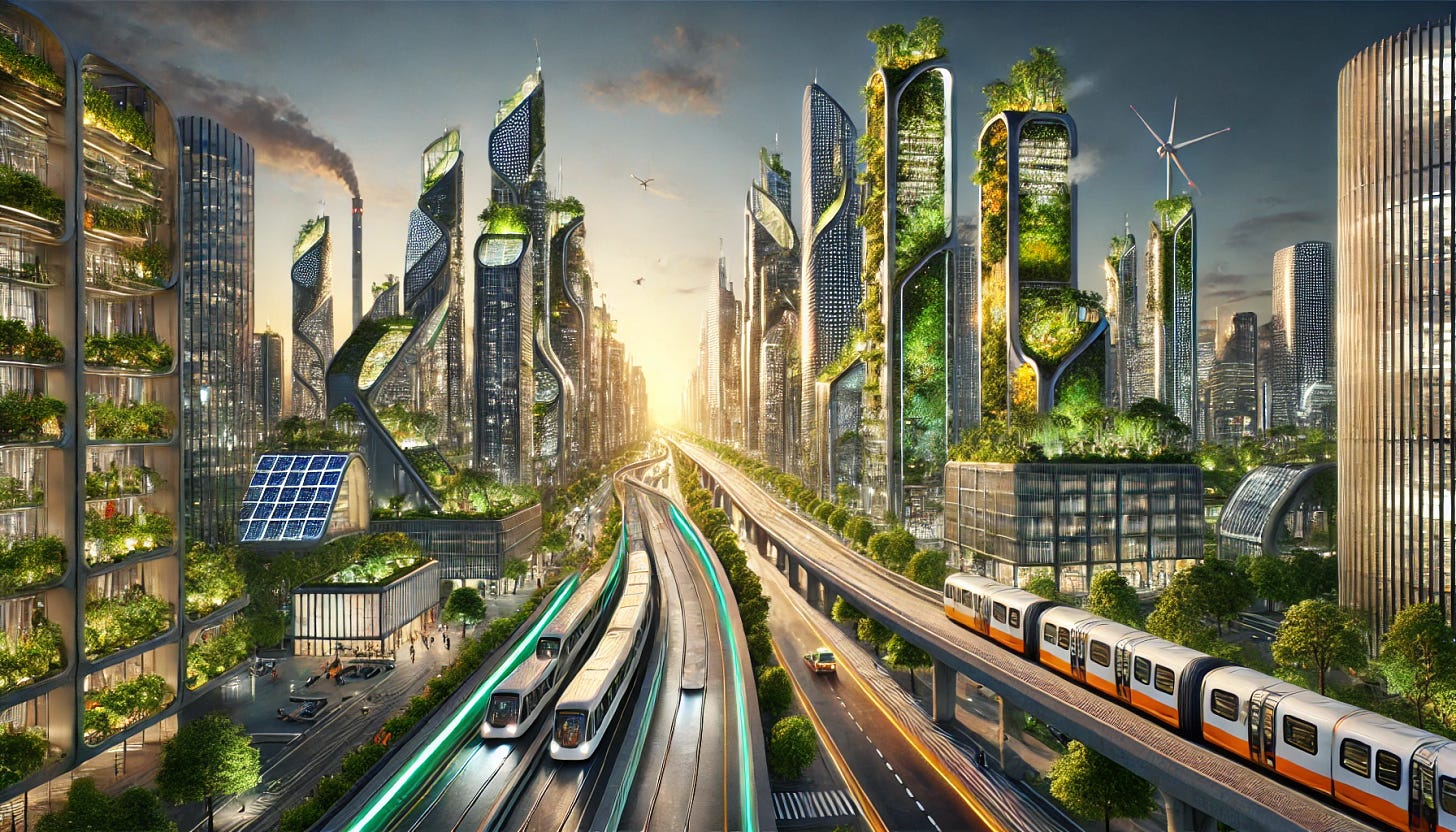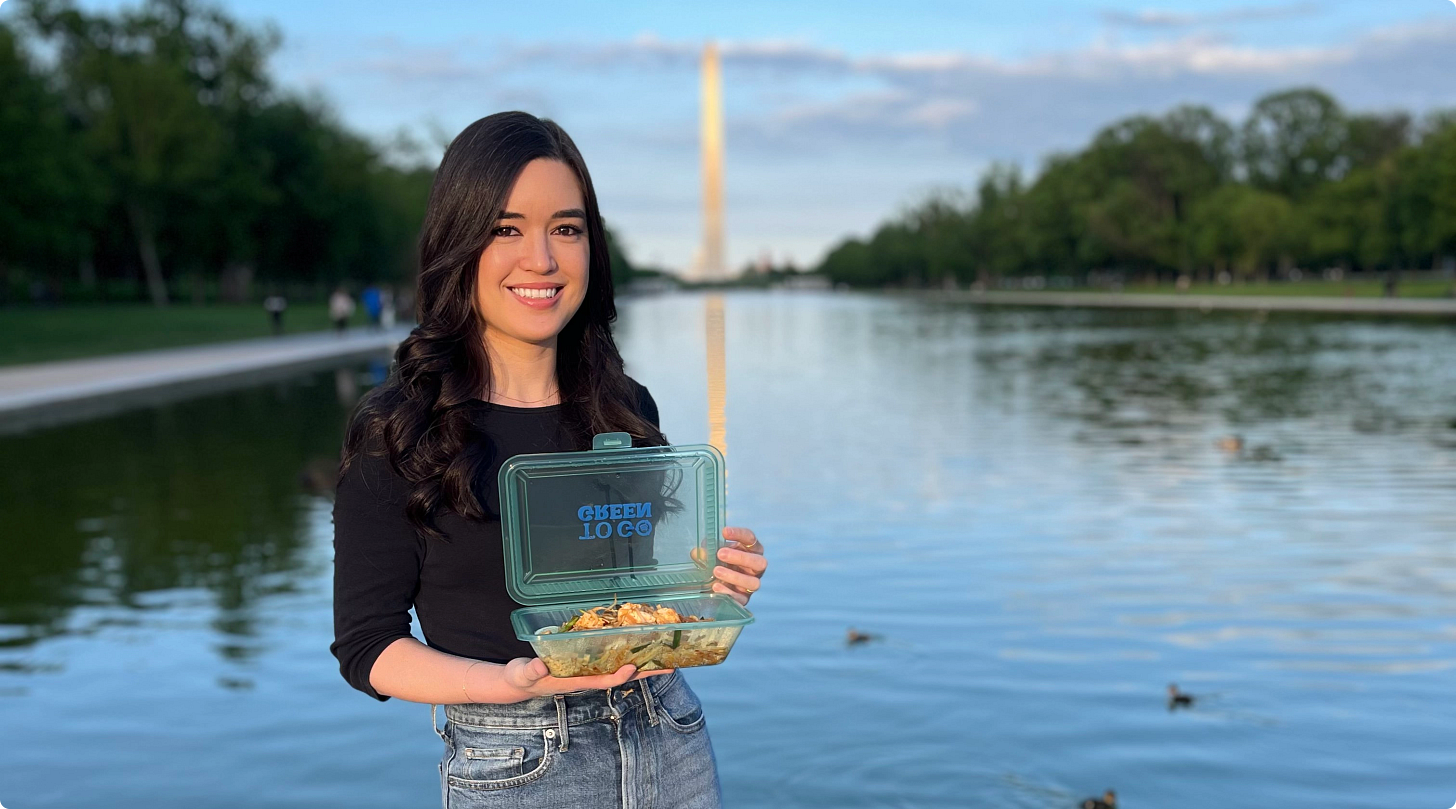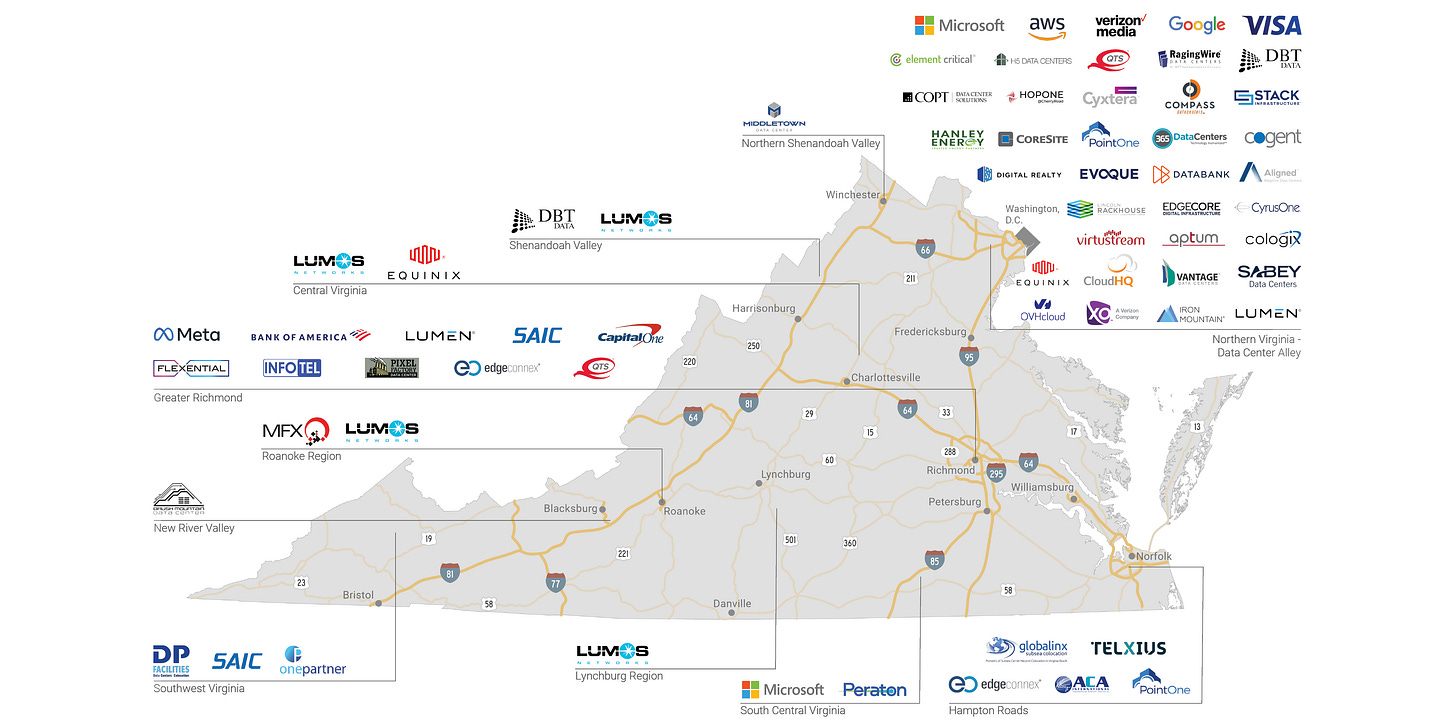Ride the solarpunk Wave: DMV’s Bold Leap into Sustainability
Climate Funding, Public Transit Innovations, and Circular Economy Solutions Power the DMV’s solarpunk Vision
The IRA continues to target local, on-the-ground impact in the DMV
#JustEnergyTransition #CommunityBasedGovernance
The Environmental Protection Agency (EPA) selected the Virginia Department of Environmental Quality to receive $150 million for climate pollution reduction projects as part of a wider effort to implement community-driven solutions to address climate change. Around $100 million will be earmarked to capture and convert or reuse methane emissions from coal mines and landfills and separately, used to fund a competitive grant program for food rescue and composting programs at agencies, colleges, and university campuses across Virginia. The other $50 million is allocated for Virginia DEQ to cut down emissions through carbon sequestration projects on natural and working lands, including coastal wetlands, peatlands, and forests. These Climate Pollution Reduction Grants support projects that reduce emissions, advance environmental justice, and promote sustainable practices, further demonstrating the Commonwealth’s commitment to engaging local communities in environmental governance.
WMATA is so solarpunk!
#FutureReadyTransit
Public transit systems are more efficient in both energy and space than private cars, helping to reduce emissions and urban pollution. Additionally, equitable transportation via public transit can reduce economic inequality by offering affordable, efficient travel options that connect all residents, regardless of income. For these reasons, we are excited to see how WMATA has expanded and improved its services to reach more DMV commuters.
The DC-area bus system, WMATA’s Metrobus, broke a record this summer with Metrobus serving around 100,000 more rider than it had in the same month in 2019 — pre-pandemic. According to Greater Washington, the impressive recovery can be attributed to better off-peak service, which makes up around 25% of total bus ridership. WMATA’s improved off-peak service allows for more residents to be able to access public transit demonstrating higher job-place access for some travelers now than before the pandemic.
According to Hayley Richardson of TransitCenter DC, “DC’s growth in access to opportunity via transit surpasses all other cities we looked at. Ridership on WMATA is bounding back faster than at other agencies which is a testament to the fact that when you put out good service, riders will come.”
Green, To Go!
#CircularEconomy
On days when I am too tired to cook and just want some takeout, I am often grossed out by the paper or plastic packaging that doesn't keep the flavors of my meals intact, but instead allows them to seep everywhere. I'm also frustrated by the fact that I can't just give them my Pyrex dishes to use instead.
Well, now there’s some hope. To Go Green is a new take-out and pick-up service that supplies restaurants reusable containers for a few cents per use. These containers can help solve the problem of throwing out recyclable containers and, even worse, “wish-cycling” which the company cites as the attempt to recycle a non-recyclable product, which can contaminant an entire load of recyclable goods and lead it to the landfill.
As of last month, Eater reported eight DC restaurants joined To Go Green’s client list: Habesha Market & Restaurant, two Alero locations, Sudhouse DC, Thaiverse DC, Kookoo Restaurant, Elsa Ethiopian Kitchen, and Eeerkin’s Uyghur Cuisine.
If these eight restaurants can spare even more from their already razor-thin margins to promote efficiency and reduce pollution, then I have hope that the rest of the industry will start considering their pollutant and carbon footprints, as well as their roles in creating a cleaner DMV area. Kudos to these food industry leaders for taking an important step in reducing our landfill contributions.
Everyone’s talking about data centers, but did you know…
#JustEnergyTransition #LongReads
That 70% of global internet traffic flows right through “Data Center Alley” right outside of Washington, DC? Northern Virginia (NoVA) is home to the internet capital of the world by way of Loudoun (and to a lesser degree Fairfax) county. This is not terribly surprising to those who know their “internet history”: the Advanced Research Projects Agency (ARPA), based in Arlington, Virginia, funded one of the first internet exchange points.
Also known as the “Dulles Technology Corridor” given the hub’s proximity to the DMV’s Dulles International Airport (Airport Code: IAD), the Alley had 30 million square feet of data centers in Ashburn of Loudoun County and another 3 million sq.ft. in Fairfax. With so much electricity demand added to our power systems from data centers alone, is their an opportunity to help decarbonize the grid?
The Energy Information Administration (EIA) found that commercial electricity demand grew the most in states with rapid computing facility growth. So, of course, Virginia took the lead in adding 14 billion kilowatthours (BkWh) in 2023.

When Loudoun County initially rejected a proposal for a company to build a larger data center than originally authorized for per zoning laws. Loudoun’s supervisor cited not having enough power to run these data centers. While this decision was reversed to allow for a smaller version of the original plan, the question about ample energy supplies with a growing industry amid intentions for state-wide decarbonization hovered over the industry. Inside Climate News reported that climate groups like the Sierra Club have advocated for slowing down the growth of data center development in Virginia, concerned that the industry, while only 2% of global emissions today, will surpass the GHG footprint of the airline industry within two years.
Sierra Club isn’t the only one concerned for what the rapid growth of data centers, especially alongside the growth of artificial intelligence (AI), could mean for the environment. A recent Morgan Stanley study found that the global data center industry will emit 2.5 billion tons of carbon dioxide by 2030, largely driven by regenerative AI processes but also through the construction of these data centers which will require carbon-intensive materials like cement and steel. Greening up these material sectors is difficult. So the carbon will likely be emitted, unless power combustion and hard-to-abate sectors find scalable green solutions (e.g., 24-hour clean energy for power combustion and low-carbon materials production). Morgan Stanley anticipates this boost in data center-driven power demand will encourage the nascent carbon removal industry.
The report says carbon removal is a “last resort” but notes its potential to address data center emissions, especially with “hyperscalers” like Microsoft, Google’s parent company Alphabet, Amazon, and others enthusiastic for carbon dioxide removal (CDR) technologies. Morgan Stanley estimates that these tech companies will increase their use of removal credits by at least 20 times by 2030 - a dramatic jump. Latitude Media reported that the “current announced capacity in the tech-based CDR approaches currently totals roughly 30 million metric tons per year, which mainly comes in the form of bioenergy with carbon capture and storage. Other pathways, including direct air capture, are significantly further from scale.”
As Virginia continues to push for a cleaner energy future under the Virginia Clean Economy Act, Dominion Energy, the state’s largest utility, has identified data centers as the largest driver of energy demand over the next 15 years. Data centers are energy-intensive, requiring vast amounts of electricity to run 24/7, sparking concerns about how this growth will align with Virginia’s decarbonization goals. Dominion insists that new natural gas power plants will be needed to reliably meet this demand, given natural gas plants’ ability to serve as quickly dispatchable power sources for peak demand, which is cleaner than the region’s old familiar fuel — coal.
Data center advocates argue that many companies, such as Google and Amazon, are already leading the way in using renewable energy, with two-thirds of the renewable power contracted by U.S. corporations going to data centers. However, environmental groups question Dominion’s growth projections and the reliance on fossil fuels.
In regulatory hearings, groups like Appalachian Voices argue that Virginia’s clean energy future should not hinge on new gas plants but should instead focus on battery storage, energy efficiency, and upgrades to the state’s transmission systems. With data centers' power needs skyrocketing, the question remains: can Virginia meet this demand while staying on track for a carbon-free grid? This is a debate we will be closely watching, so stay tuned!
🔖 Upcoming Calendar Events!
📅 Sep 28th | #CommunityBasedGovernance 🐝
The city of Mount Rainier, just outside of Washington DC in Maryland, will be hosting a community conversation on September 28th from 10-12pm at the intersection of Newton St. and Newton Pl. to discuss the upcoming Newton street project. The city hopes for this to be a community conversation for residents to learn more about the project, provide feedback, and share ideas about how the planned improvements can best serve the neighborhoods.
The project, set to begin in October, intends to be transform Newton St. into a “green” street, featuring sidewalk improvements, drain improvements, storm water best practices, landscaping, and speed tables — all in all, a more sustainable street for an urban space.
The Low Income Development Center designed the project while the American Relief Program funded it. Yay for community input on how to best improve our neighborhoods!
📅 Oct 5th | #GreenSpaces 🌳
On October 5th, DC is hosting Open Streets - a car-free day promoting biking, walking, fitness activities, and other family-fun activities. From 9-3pm, on 7th St NW, locals and tourists alike will be able to see a typically traffic heavy part of DC in a brand new light. From this new vantage point, with no cars in sight, residents will get a glimpse of what a true solarpunk city dc can be!






